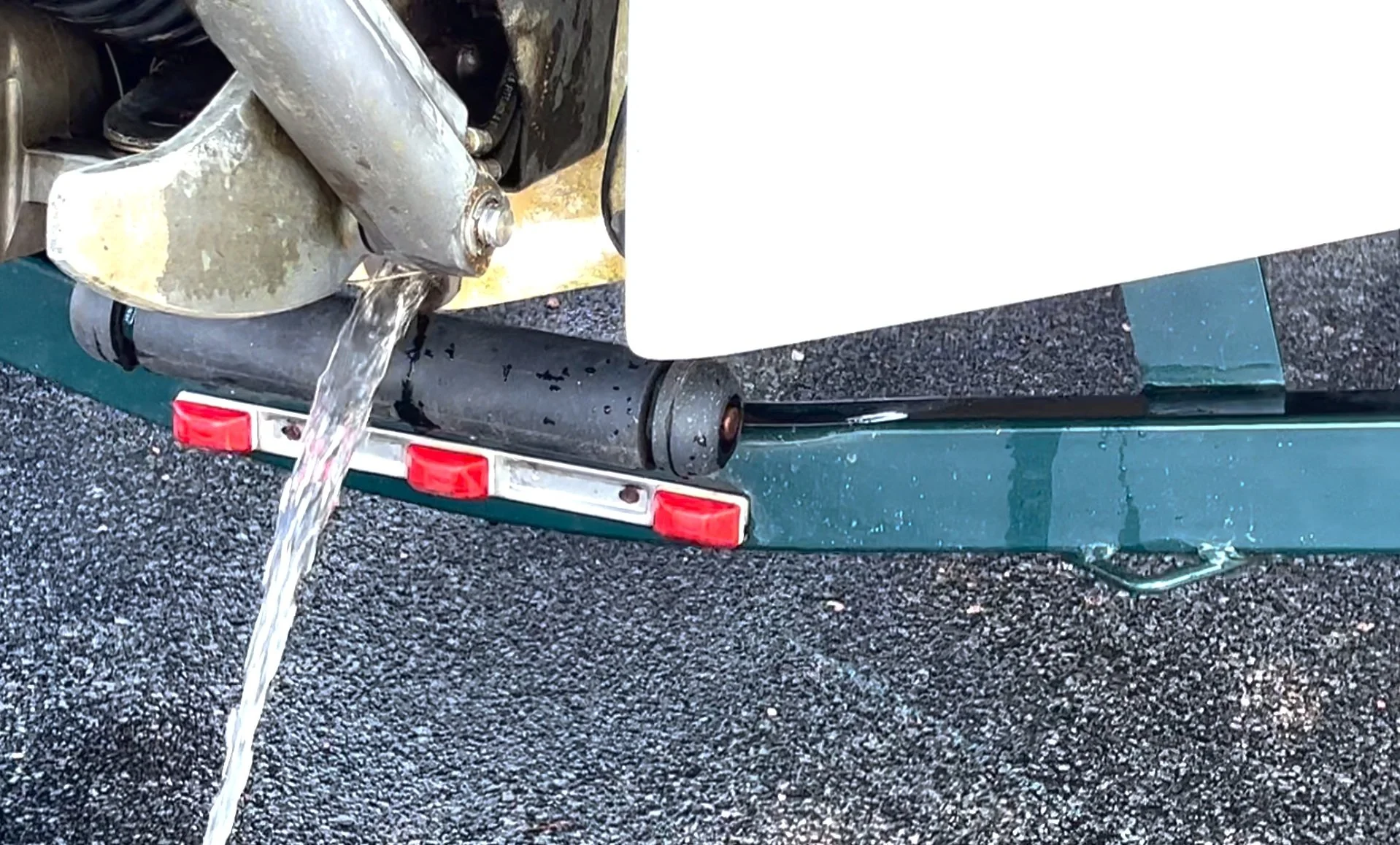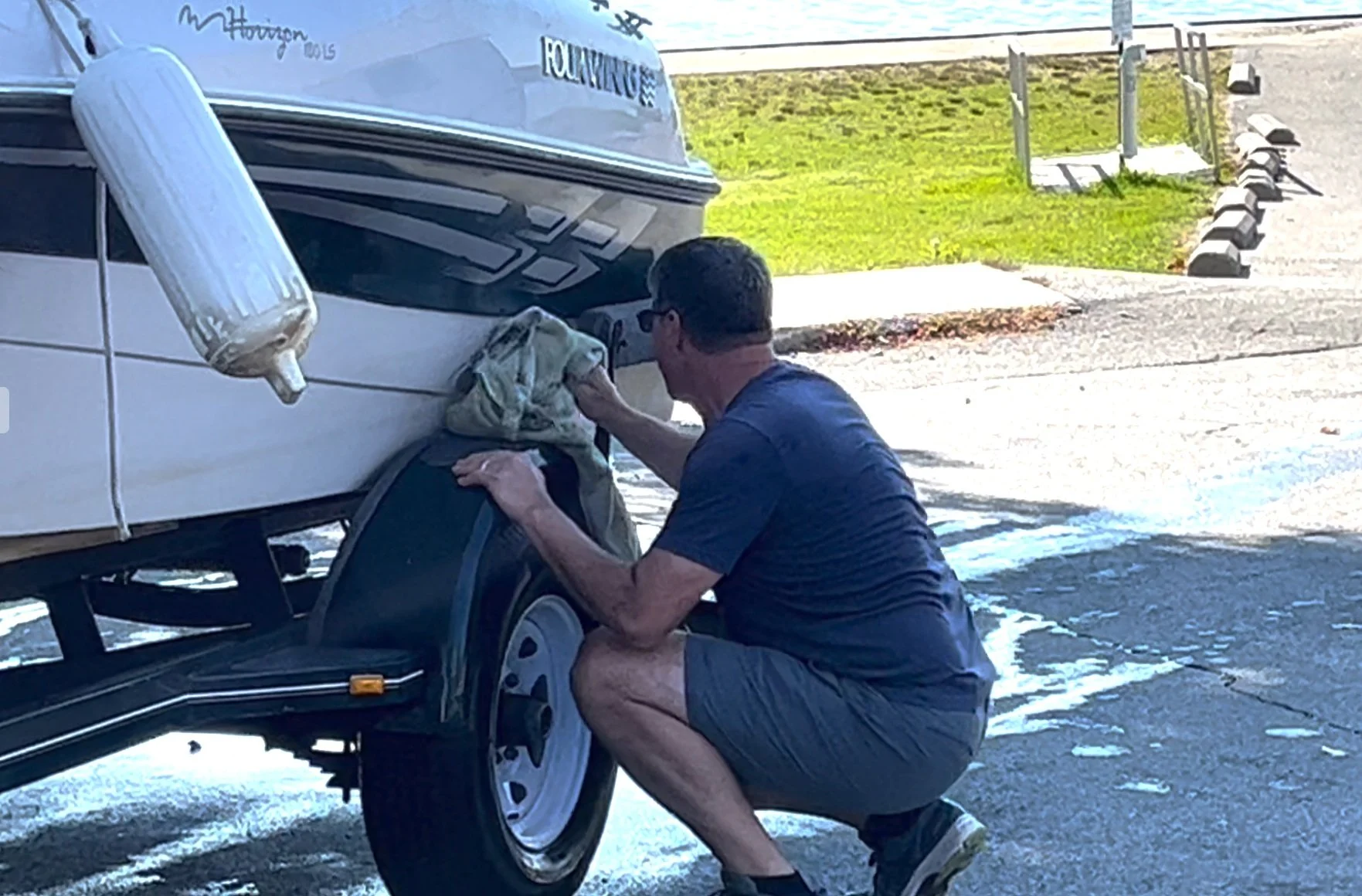What you can do

Inspect your boat
The health of our lake depends on you! Please take the time to carefully inspect your boat before going to the boat launch. Your participation will benefit the lake for generations to come.
If your boat has been in a different body of water, please visit a Boat Wash Station since you could be transporting unwanted Invasive hitchhikers.
There are over 60 Boat Wash Stations in the Adirondack Park. When you arrive at a Boat Wash Station, an attendant will properly clean your boat at no cost!
Clean. Drain. Dry.
-

Clean
Clean any visible mud, plants, fish or animals before transporting equipment. Discard materials in a trash can or at an invasive species disposal station; these stations have been installed at many boat wash sites for your convenience. Do not wash or release material into a waterbody. Some invasive species, such as zebra mussels, can be difficult to remove from a boat hull. They first need to be killed by water or steam that is 140º F, then they need to be removed by a brush or pressure washer. For help cleaning your boat and equipment, visit a decontamination station for a free boat wash. Dump unused bait in trash cans and bucket water on dry land above the high water line, not in the water.
-

Drain
Drain all water holding compartments including ballast tanks, live wells, and bilge areas. Drain your boat before you leave an access site. Waterskis or wakeboards sometimes have ballast tanks; be sure to drain them. Drain your live well if you have one.
-

Dry
Dry boats, trailers and all equipment before use in another waterbody. The most effective way to ensure that no invasive species or fish diseases are transported to a new body of water is to completely dry your boating and fishing equipment. Drying times vary significantly depending on the type of equipment, air temperature, and relative humidity. While the outside of a boat will dry relatively quickly, bilge, live wells, and other parts of a boat not reached by the sun or without good air circulation will take additional time to dry completely. A minimum of 5-7 days drying time in dry, warm conditions is recommended.
Reduce Stormwater Runoff into the lake
Stormwater is water from rain or melting snow that does not soak into the ground. Instead, it runs over impervious surfaces like roofs, driveways, patios and sidewalks. As the water moves across these surfaces it picks up pollutants such as gas, oil, litter, fertilizers, and pet waste. The stormwater then runs directly through shorefront properties and into the lake. These pollutants can harm the fish populations and promote the growth of algae and weeds.
• Direct downspouts away from paved surfaces and away from the lake
• Avoid using fertilizers and pesticides; at a minimum switch to phosphorus free fertilizer
• Establish a natural plant buffer area along the lakefront. Low growing shrubs or natural, unfertilized gardens are good.
• Reduce impermeable ground surfaces by replacing them with natural walkways, gravel or other permeable pavements.
• Never wash anything near or directly in the lake. Soaps and cleaning agents contribute to pollutants in the water. Avoid washing boats or cars near the lake.
• When removing yard waste, do not rake leaves and debris into the lake.
More information on stormwater can be found at:
dec.ny.gov/environmental-protection/water/water-quality/stormwater
Maintain your Septic System
As a homeowner that is not part of a municipal sewer system your household wast is discharged into septic system on your property. It is your responsibility to maintain your septic system, not only for the health of Schroon Lake but for the health of all who live and recreate here.
• Inspect your septic system every 2-3 years to make sure that there are not any underlying problems you aren’t aware of.
• Pump out your septic every 3-5 years for year-round homes and every. 5-7 years for seasonal homes to maintain the integrity of the system and minimize health & water quality impacts.

